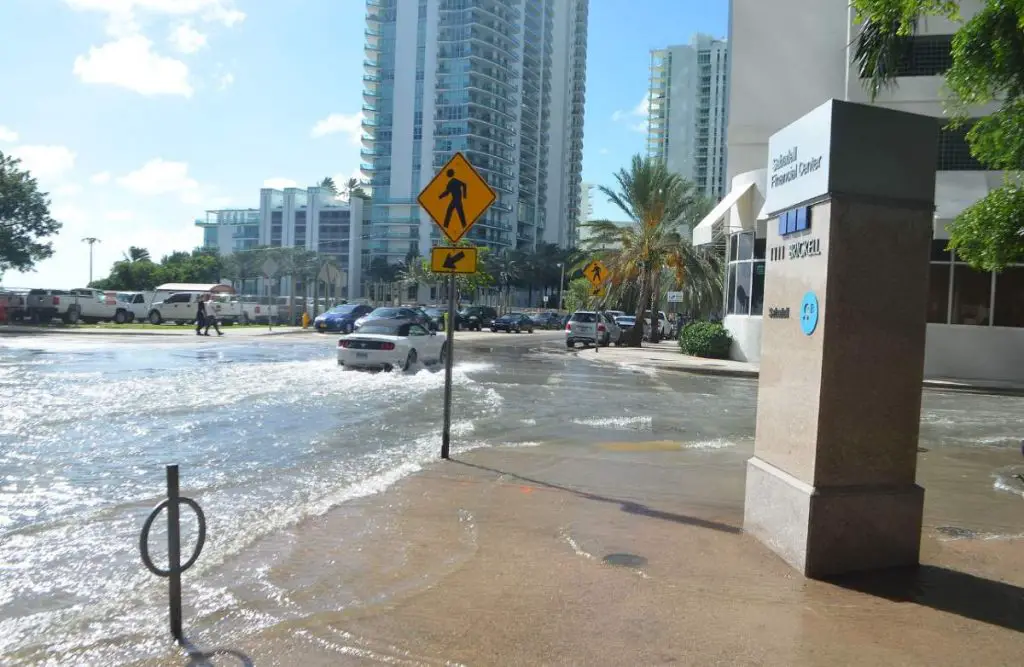Combating climate change requires battling threats on multiple fronts, especially when it comes to flooding. Coastal residents have a unique waterborne threat that destroys livelihoods numerous times each year. We should consider ways to protect these regions from flooding and advocate for long-term solutions.
1. Upgrading Roads and Bridges
The coastal floodplains are at more risk for annual flooding than other parts of the country. They have a long future of battling rising sea levels, but their infrastructure design doesn’t have global warming in mind.
When construction teams installed the roads, people weren’t concerned with ocean waters coming inland because they weren’t a threat. Between 1920 and 2020, the global sea level rose 10-12 inches, but the next 10-12 inches will only take another 30 years.
Repairs that happen multiple times per year after hurricanes and strong storm systems won’t be done before the next flood, and they won’t withstand it well. Upgrading infrastructure should be a top priority as experts look into protecting coastal regions from flooding risks.
2. Targeting Property Buyouts
More frequent hurricanes are another symptom of global warming that increase flooding along the eastern coastline. There’s no ability to redirect the path of a hurricane, but communities can make targeted property buyouts of flood-prone areas.
City officials in the Charlotte-Mecklenburg area of North Carolina began a floodplain buyout program in 1999 that has proven to be a success. Over 185 acres remain undeveloped, and the government paid to relocate over 700 businesses and families to less vulnerable locations. Since the program began, it has allowed the community to avoid $25 million in losses and guarantees another $300 million saved from future floods.
Additional coastal states need time to implement similar programs and make a difference. In the meantime, families can create a hurricane response plan by designating a place of shelter, mapping evacuation routes, and putting together survival kits with food and water before the next storm arrives.
3. Creating Living Shorelines
Coastal erosion led to the installation of sea walls along U.S. shorelines, but they aren’t a perfect solution. The length of sea walls needed over the next 20 years will cost $416 billion – and local communities have to foot the bill.
Residents in those communities also desire a different solution because it doesn’t necessarily stop coastal erosion. Walls redirect waves and tides to other locations, leading to more deterioration in undefended points.
Living shorelines are sea wall alternatives that could be a more significant long-term help. They would focus on restoring reefs and plants and creating root systems that anchor the coast against water erosion. Living shorelines could be the next best way to keep water from coming inland. That’s because 15 feet of marshy terrain under the sea would absorb 50% of wave energy and restore decaying habitats for marine life.

4. Installing More Water Pumps
Many people think of storm systems and melting polar ice caps when they imagine flooding. Coastal regions also face risks from high tides because rising sea levels make waves reach farther inland. Residents suffer from flooding in places like Charleston, South Carolina, where a full moon in 2018 raised the tide by 7.37 feet and buried the city in 6 inches of water.
High-volume water pumps can mitigate this damage. If installed around coastal cities – specifically in the most flood-prone areas and along roads – they could redirect water away from those most at risk. There would be minimal repairs after the tides recede, saving communities from the costly, extensive reconstruction.
5. Adapting Climate Technology
Technology advances rapidly, but experts should focus on adapting current climate tech to provide the most accurate information during an emergency. The software continuously watching and forecasting sea-level rise models would be an excellent addition to coastal communities, as well as systems that monitor groundwater conditions to predict river flooding.
Families can also upgrade their technology by downloading local weather station apps to get community-specific updates. Push notifications would be more timely and effective than trying to catch the news at just the right time before a flood.
People can also install technology in their homes to prevent excessive damage, like new sump pumps. They’ll remove standing water in crawlspaces and basements when the ground level rises too far.
Protect Coastal Regions From Flooding Risks
We can learn how to protect coastal regions from flooding by staying up to date with the latest technology. Extensive and individual improvements will go a long way in keeping people safe as long as frequent flooding remains a challenge.
- 9 Myths and Facts About Environmental Toxins - January 4, 2023
- Top 6 Deadliest Hurricanes ever recorded - November 7, 2022
- Are All-Electric Homes Feasible in the Near Future? - September 25, 2022

